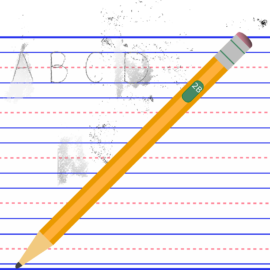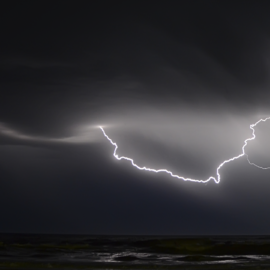
OLYMPUS DIGITAL CAMERA
In the Big Year birders rushed to the Gulf Coast as there was a big storm coming in and the head winds forced the birds to the ground so a lot of birds could be seen to up their count. This is the other side of the story of these events.
After Hurricanes Laura and Delta tore through southwest Louisiana last year, scientist Erik Johnson expected fewer bird songs to fill the air. The storms devastated the region, flattening buildings and knocking out power and water for hundreds of thousands of people for weeks. Habitat for birds wasn’t spared, either. In fact, a new peer-reviewed analysis found several species experienced a sharp decrease in the hurricanes’ aftermath. Lashed with ferocious winds and storm surges higher than 8 feet, the limbs of mighty oak trees that once housed birds were blasted apart, Johnson said, and portions of what was once land were scoured out and converted to open water. “The place is just completely flat. It’s awful,” Johnson, the director of conservation science for Audubon Delta, said as he recalled the splintered remains of trees and the barren landscape. “How can a small little bird survive that? It’s got to be scary as hell. That’s why we get out, and birds don’t have that ability.”
nola.com
Despite the number of hurricanes hit us there was little known on how they impact birds.
Despite being one of the country’s most hurricane-prone states, little is known about how the storms affect Louisiana’s bird populations, especially in southwestern Louisiana. In part, this is because storms are unpredictable and destructive, making it difficult to collect data in the aftermath and have a baseline for comparison. With more frequent and intense storms, Paul Leberg, who heads the University of Louisiana at Lafayette’s Department of Biology, noted that understanding their effects can help guide conservation efforts in areas already vulnerable due to coastal erosion and sea level rise. “These habitats are being lost at fairly high rates and trying to understand their importance to birds and how those habitats interact with storm events is going to tell us a lot about how sustainable bird populations are on the coast going into the future,” Leberg said. Johnson’s analysis, published in the Southeastern Naturalist, relied on data from one of the nation’s longest-running citizen science projects, the National Audubon Society’s annual Christmas Bird Count, which takes place between Dec. 14 and Jan. 4 each year.
This bird count, and before watching The Big Year movie, we had no idea how large the number of birders was.
Just three months after Delta made landfall in Creole, Johnson was joined by a small army of skilled volunteers who participated in the local one-day bird count. Groups drove around in individual cars tallying each winged creature they came across. Johnson compared the data collected in January against the past seven years of counts. The study found that local landbirds were the most vulnerable. Throughout the day, not a single blue jay was counted, marking the first time in 36 years that the vibrant songbird was absent. And it wasn’t alone. Three other landbirds, including the red-bellied woodpecker, were also absent, and even the number of land-dwelling migratory species that winter in the area was diminished. Other local and migratory water and shorebirds – those that thrive in open water or along beaches – appeared in higher numbers than past years, benefitting from the landbirds’ loss after Laura and Delta carved out new, shallow water areas. For example, killdeers, a black-and-brown, outspoken plover, saw a massive uptick from past years.
The monitoring needs to be continued as hurricanes are normal here.
Robert Dobbs, an ornithologist with the Louisiana Department of Wildlife and Fisheries, emphasized that the paper makes clear that storms are part of the natural landscape and have positive and negative effects on different types of bird populations. “A lot of what we do is armoring or trying to keep natural forces at bay,” he said, “but I think it’s important to recognize these natural processes and consider ways in which we can keep them in the system and find some middle ground with what’s consistent with our other goals.” Johnson will continue to monitor the region’s recovery with each Christmas Bird Count, set to take place next week on Jan. 3 again in Creole. He thinks it could take at least three to five years for numbers to level out. “It’ll be interesting to see how many years it takes to get a bird community back that looks like what it looked like before the storm,” he said.
If you are a birder, this is a good way to help the community.



